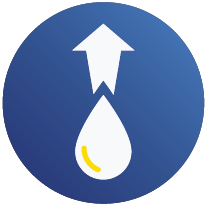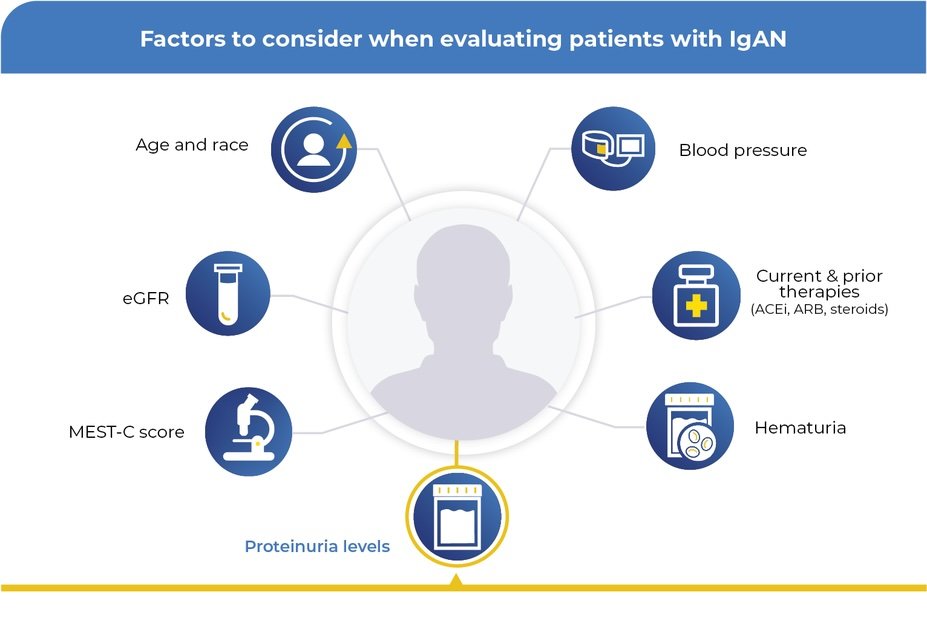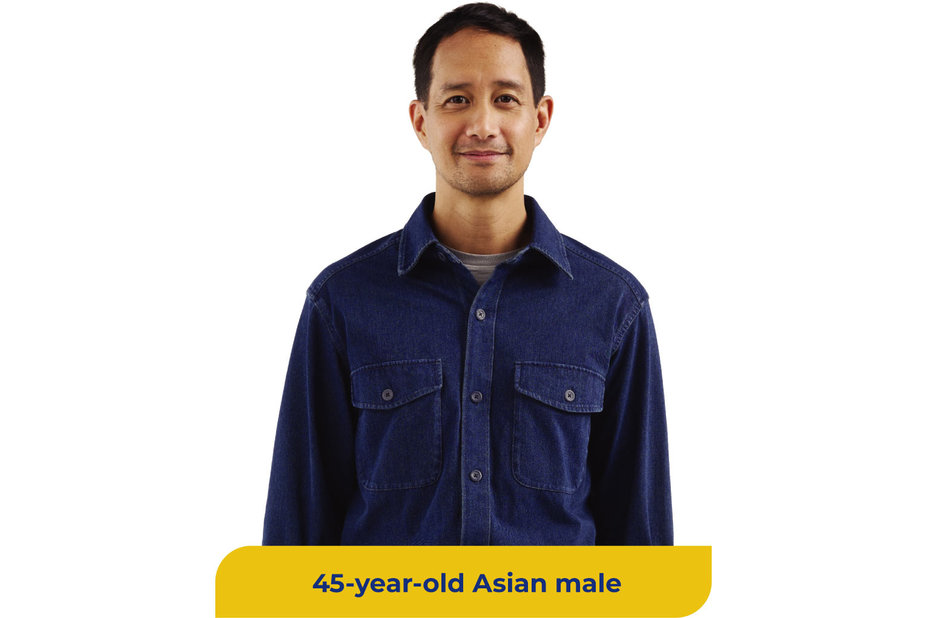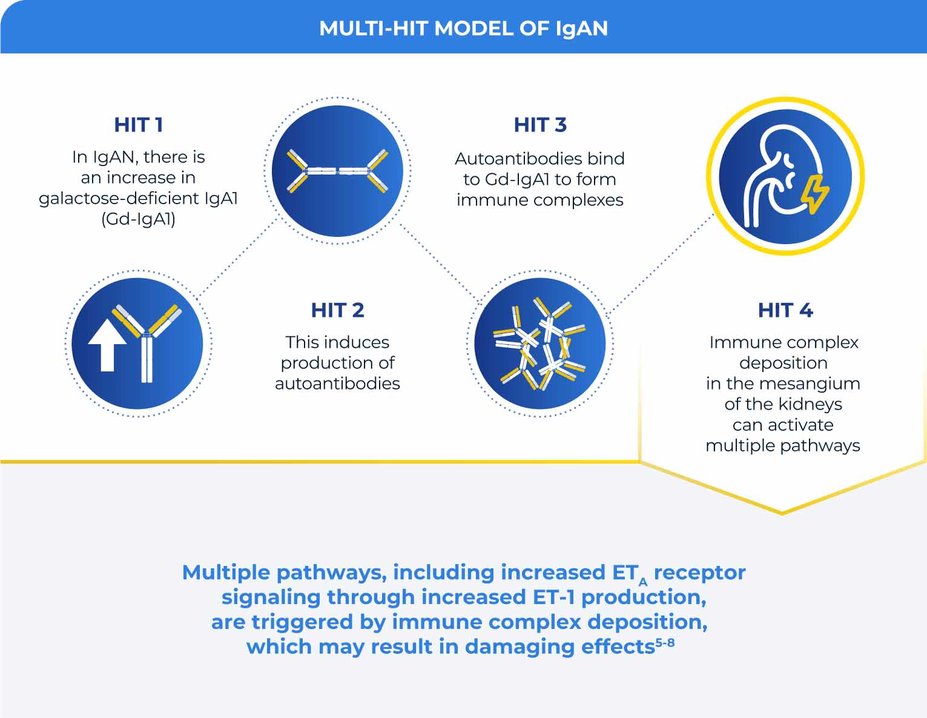About IgAN
Recognizing the heterogeneous presentation of IgAN is key to evaluating your patient’s disease1
Persistent proteinuria* could be a signal of disease progression in your patients with IgAN¹

OVER HALF of patients with IgAN continue to display persistent proteinuria at 3 months despite optimized doses of RASis, like an ACEi or ARB2

According to KDIGO guidelines, proteinuria <1 g/day is a reasonable treatment target in IgAN1
How does IgAN impact your patients?
Meet Vince: A patient with IgAN and persistent proteinuria
There could be another option to lower proteinuria for patients like Vince3
Initial presentation to nephrologist1
Proteinuria (g/g): 1.9
eGFR (mL/min/1.73 m2): 63
BP (mm Hg): 131/85
Comorbidities: None
Vince’s nephrologist suspects IgA nephropathy (IgAN) and sends him for a biopsy. The biopsy confirms an IgAN diagnosis so he is started on an ACEi and lifestyle changes (low-sodium diet and exercise). His nephrologist dose adjusts to the maximally tolerated and stable dose of his ACEi.
Hypothetical patient case and portrayal.
6-month follow-up shows proteinuria is still persistent1,3,4
Proteinuria (g/g): 1.5
eGFR (mL/min/1.73 m2): 62
BP (mm Hg): 125/80
What would you consider doing next for this patient, and what treatment goals would you have?
Explore the pathogenesis of IgAN
Activation of the ETA receptor by ET-1 is thought to contribute to the pathogenesis of IgAN5
Kohan DE, Barratt J, Heerspink HJL, et al. Targeting the endothelin A receptor in IgA nephropathy. Kidney Int Rep. 2023;8(11):2198-2210. doi:10.1016/j.ekir.2023.07.023
How does VANRAFIA work?
Ready to see what’s possible with VANRAFIA?



